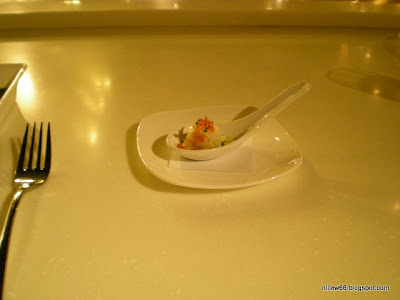Île de Ré is a fabulous island during spring to summer. Rest of the year, the wind is too strong and there's simply too much rain mixed with cold wind from the Atlantic. I first visited the island back in spring 2004 during a university trip for foreign students to 'learn' about French culture. The best way to explore is of course sans bus and car. If you're an amateur trekker...by foot. Bicycle is also an interesting option. Visit in mid spring and the fields will be flowering, especially the wild patches where the field poppies grow. I saw them from the bus's window so no chance to photograph any.
Reflecting back, I realized I never capitalized from the proximity of where I stayed (town center of La Rochelle) to the island (only about 10 km plus or so) because I was so busy trying on other things...if you're ever so lucky enough to get there, don't miss the wonderful salt marshes where fabulous sea salt is still hand-collected during the warm and long summer nights. The best, called fleur de sel, is a must for the dinner table. French uses this to flavour food and salads. Île de Ré and the neighbouring Ile d'Oleron are also producers of magnificent new potatoes of irregular shapes. These are fantastic lightly steamed or boiled and eaten with salted butter. In the salt marshes, a strange succulent plant resembling an algae called salicorne is a must-try. Lightly coat with a vinaigrette without salt (the plant is naturally salty) is the best way to taste this unusual delicacy.
If you're a fan of seafood, especially oysters, this IS the place to be as there is a bewildering choice. I tasted one of the strangest yet delicious ice-cream near the light house - caramel au fleur de sel: Butterscotch with salt flower. A must-try also. This flavour is also made into candies, a speciality of the salt-making regions of the French Atlantic Coast.
For a virtual visit, go to the island's official website at: www.holiday-iledere.co.uk
Reflecting back, I realized I never capitalized from the proximity of where I stayed (town center of La Rochelle) to the island (only about 10 km plus or so) because I was so busy trying on other things...if you're ever so lucky enough to get there, don't miss the wonderful salt marshes where fabulous sea salt is still hand-collected during the warm and long summer nights. The best, called fleur de sel, is a must for the dinner table. French uses this to flavour food and salads. Île de Ré and the neighbouring Ile d'Oleron are also producers of magnificent new potatoes of irregular shapes. These are fantastic lightly steamed or boiled and eaten with salted butter. In the salt marshes, a strange succulent plant resembling an algae called salicorne is a must-try. Lightly coat with a vinaigrette without salt (the plant is naturally salty) is the best way to taste this unusual delicacy.
If you're a fan of seafood, especially oysters, this IS the place to be as there is a bewildering choice. I tasted one of the strangest yet delicious ice-cream near the light house - caramel au fleur de sel: Butterscotch with salt flower. A must-try also. This flavour is also made into candies, a speciality of the salt-making regions of the French Atlantic Coast.
For a virtual visit, go to the island's official website at: www.holiday-iledere.co.uk

 Quaint restaurant by the sea...restaurants, houses and buildings in general adhere to a uniformed colour code at Ile de Re: white for body and green or sea blue for doors and windows.
Quaint restaurant by the sea...restaurants, houses and buildings in general adhere to a uniformed colour code at Ile de Re: white for body and green or sea blue for doors and windows. Entrance to the prison: despite its current splendour and romantisme, La Rochelle and Ile de Re shared a violent history in slave trading.
Entrance to the prison: despite its current splendour and romantisme, La Rochelle and Ile de Re shared a violent history in slave trading. An extremely picturesque little house at the salt marsh, fenced by nature - in this case flowering wild mustards.
An extremely picturesque little house at the salt marsh, fenced by nature - in this case flowering wild mustards.
The salt pans where the famous "fleur de sel" (salt flower), crystallized salt on the surface of the salt pan is formed at the height of summer. People who collect the salt (they're all hand collected) is called sauniers.






























